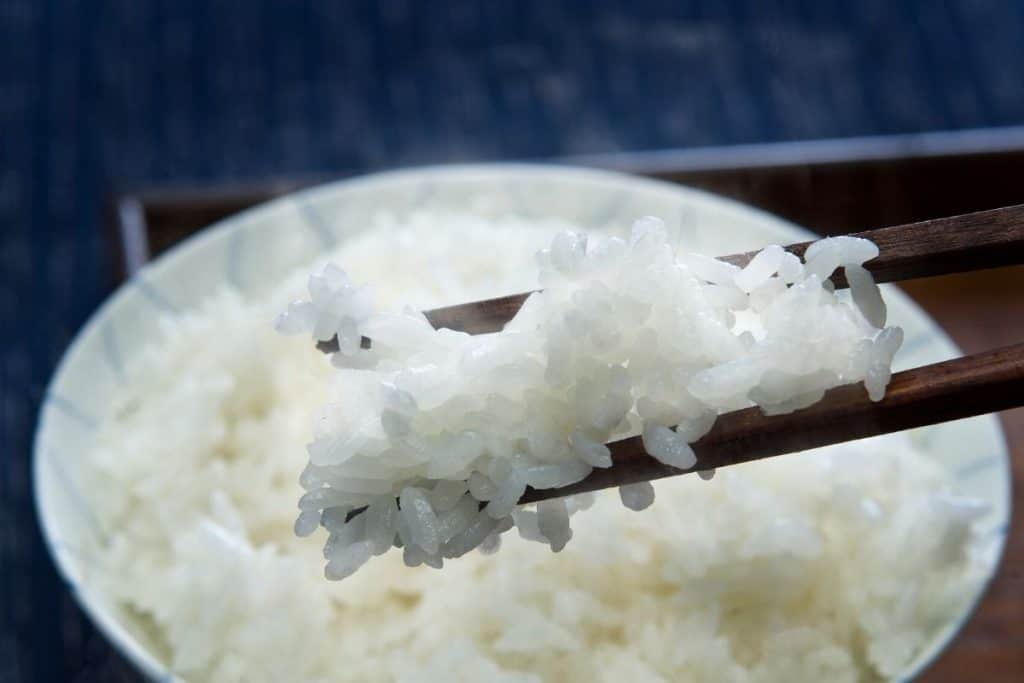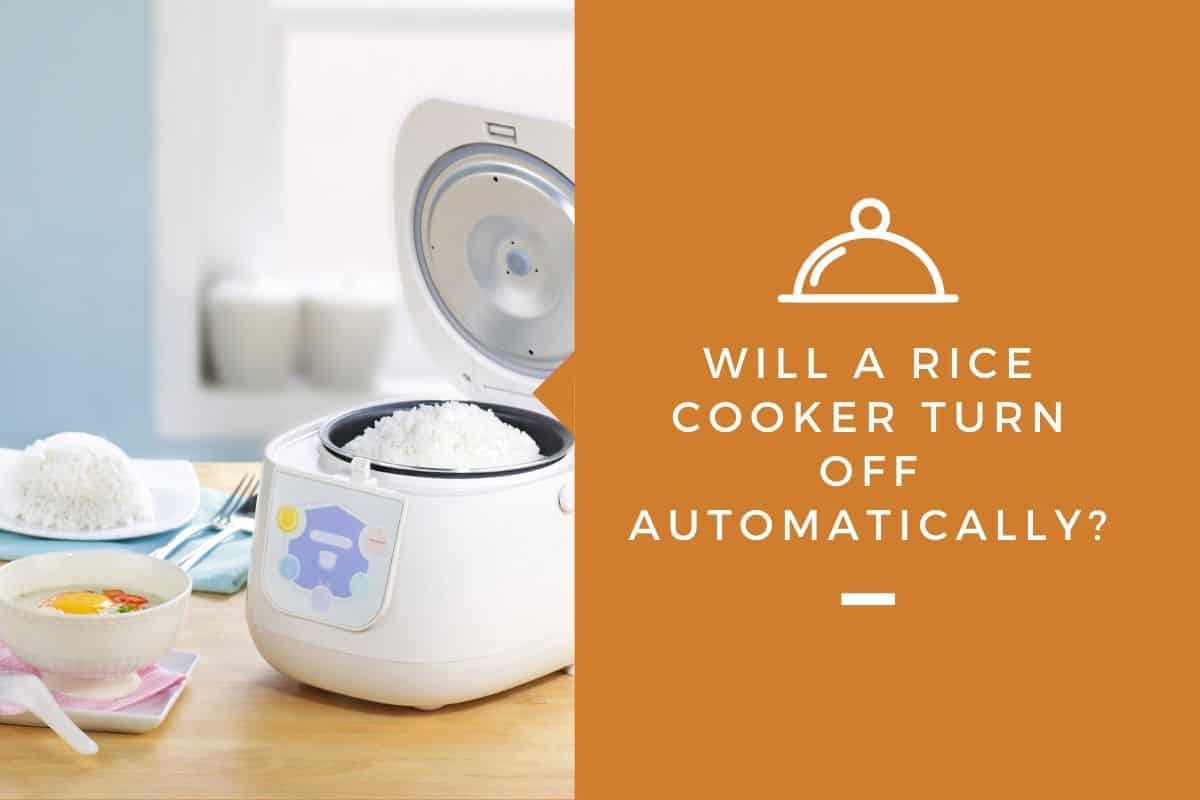The advent of modern kitchen tools, like the rice cooker, have made multi-tasking in the kitchen an easy reality. Where one used to have to monitor the rice every second to prevent its burning, now one can plop the ingredients, switch on, and walk away.
However, what happens when the rice is cooked? Does the rice cooker really just turn off automatically when it’s done?
Great question!
Does a rice cooker turn off automatically? Yes, a rice cooker is specifically created so that once the rice is cooked, the machine will automatically shut off. Some rice cookers will not immediately shut off, but rather stop cooking and simply revert to a ‘warm’ mode – which keeps the rice warm but does not continue cooking the rice.
How many times have you lifted the lid, thinking the rice was finished, only to replace it quickly? Somehow, a rice cooker knows when to stop.
Read on, and we will explain how it is able to do so.
The History of the Rice Cooker
In order to understand the heating technology involved inside a rice cooker, and why they were created with an automatic shut off function, it’s helpful to understand the history of the rice cooker.
The term itself was appropriated from ‘rice steamers,’ which were traditionally made of ceramic and date back as far as 1250 BC. They were constructed like modern-day double boilers, in which the bottom pot was filled with boiling water, and the top pot contained the food contents one wished to cook at a precise temperature.
However, the ancient rice steamer had holes near the top to allow steam from the water bath into the insert of the other pot. The modern-day electric rice cooker, which was developed in Japan where it is known as a Suihanki, operates on a similar principle.
The General Operation of a Rice Cooker
Obviously, the function of a rice cooker is to cook the perfect bowl of rice. However, the science behind it is more complicated than ‘just throw it in the pot.’ Formerly, one had to attend very closely to their rice to ensure it cooked properly and did not burn. Burning rice without a thermostat is incredibly easy to do.
Electric rice cookers were made with the internal knowledge of the exact cooking temperature in which to shut off, to ensure no rice is ever burned.
It means that a person who is cooking in the kitchen can measure the correct amount of rice and water, pour them into the rice cooker, switch on and walk away – or do other important cooking tasks.
The Elements of a Rice Cooker
Every rice cooker has a main body (where the rice and water go), an electric heating element, a thermostat, and a steam release hole. Most rice cookers come with a rice paddle (to spoon out the rice) as well as a small measuring cup (with which to measure the correct amount of rice and water).
More complex cookers come with different cooking options in case you are making a rice porridge instead of normal rice.
Thermocouple
Rice cookers are precise machines that use something called a thermocouple. A thermocouple is a thermo-electric sensor that measures temperature. A thermocouple is made up of two wires, both sides of which contain differing metals, which join at the end to form a junction.
One of the junctions of a thermocouple is placed on the surface of the environment whose temperature is being measured (in our case, the internal basin of the rice cooker). This top junction is also known as the ‘hot junction.’
On the opposite end of the thermocouple is the ‘cold’ junction. This side maintains a constant temperature, unlike its counterpart. When there is a change in temperature in the hot junction, voltage will be sent through the thermocouple loop.
This differential (difference in temperature) is then converted into a temperature reading via a thermostat.
How Does a Rice Cooker Know When the Rice Is Done Cooking?

Rice cookers are intelligent devices that are made with the specific purpose of measuring the correct internal temperature of the cooking apparatus for an impeccable bowl of rice.
In order to achieve a moist, sticky, not crunchy or gummy bowl of rice, the proper amount of water, rice, and heat must occur. A rice cooker ensures the proper amount of heat is applied and then stopped at the exact right moment.
Using the thermocouple and thermostat, the rice cooker senses temperature inside the inner pot, and the machine will switch to ‘off’ when the heating element in the inner point is above the point of boiling.
The heating element also remains on as long as there is still some water in the pot that has not yet been absorbed or been released as steam. Water cannot heat beyond its boiling point (which is 212 degrees Fahrenheit). Otherwise, it turns to steam.
Thus, a rice cooker is monitored to remain at or below 212 degrees to ensure that any water not yet absorbed gets absorbed, and any remaining water is released as steam. The thermal sensor monitors all of this.
When all the water has been absorbed, the temperature in the pot will begin to surpass 212 degrees (since there is no more water to release as energy in the form of steam) – this makes the temperature inside the pot rise.
As soon as the thermostat detects this rise in temperature, it will fail safe to ‘off’ mode so that the rice does not burn. And voila! The perfect pot of rice.
The Difference Between Traditional Rice Cookers and Digital Rice Cookers
Traditional Rice Cookers
A more traditional rice cooker with a simple -on-off-warm switch operates by transferring heat from the heating plate to the cooking ban (as we described in more detail above.) The type of metal used during this process (either in the strands of the thermocouple or in the chosen heat plate) are more conducive than others.
For example, copper and aluminum are highly conductive metals. When a metal is highly conductive, it transfers heat easily. While a wide range of materials can be used for the cooking plate, the choice of metal does affect the overall time it takes the rice to cook.
However, despite the choices of material, the analog (classic) style of rice cooker has a simple temperature gauge which will fail-safe to ‘off’ once it reaches higher than 212 degrees.
Digital Rice Cookers
Digital rice cookers, while made with a similar concept of head conduction, operate differently since they are digital. Digital rice cookers actually have computer chips in them that facilitate their ability to make changes to both the cooking time and the temperature. Oddly the mathematics used in digital rice cookers is called ‘fuzzy logic.’
Fuzzy logic calculations are essentially a way to program machines or computers to think more like humans – so that with it the digital calculations, as opposed to absolute answers like “on” or “off,” the computer has the ability to think “almost” and “not quite.”
This ability means a simple appliance, like a rice cooker, can make judgment calls closer to how a human would make them, though usually with a much higher rate of accuracy. This ensures a perfect pot of rice – just a slightly different way of going about it.
The Key Takeaway
Rice cookers are made to have a fail-safe to switch to ‘off’ to protect the integrity of the cooked rice because doing it by hand on the stove rice can so easily burn. If one has measured the rice and water accurately, the cooker will make the perfect pot of rice every time, and the reason for this is that the rice cooker knows when to switch off automatically.
Whether your rice cooker is traditional or digital, it will have the technology needed to stop cooking the rice at the precise time necessary to prevent burning.
While some rice cookers do have a warm setting, it will always stop cooking once the water has evaporated to prevent the rise in temperature within the cooking pot.

